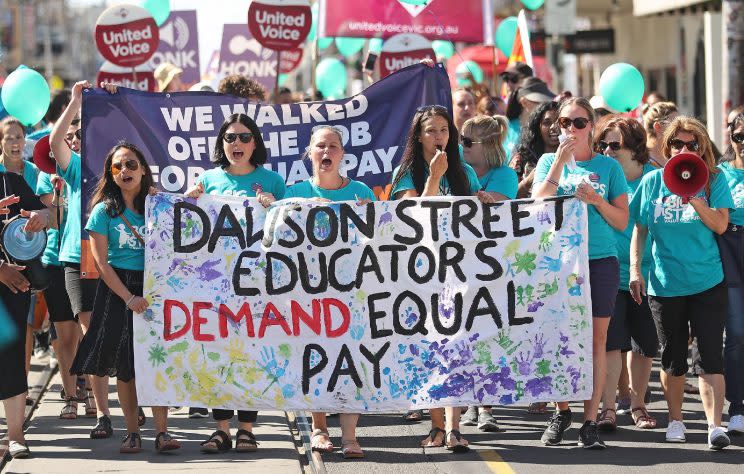How the gender pay gap could be closed 36 years earlier

As part of Yahoo’s global coverage of International Women’s Day 2017, Yahoo Canada profiled women from various backgrounds and professions and asked them “What’s next?” What happens after Women’s Day — what would women like to see happen next in their personal lives, in their respective careers, and as a whole for females across the nation? Check out more of our International Women’s Day coverage here.

Pay parity is an issue that is top of mind for many women (and men) in 2017, as women in Canada continue to make about 74 cents for every dollar a man makes.
However new research shows that gap may be closed sooner than originally thought.
Based on information from professional services company Accenture, the pay gap in developed markets could be closed by 2044, which is 36 years earlier than previously estimated. The news is even better for Canada: pay parity could be achieved by 2035.
The news is even better for Canada: pay parity could be achieved by 2035.
“The future workforce must be an equal workforce,” Bill Morris, president and senior managing director at Accenture Canada, said in a press release.
“The gender pay gap is an economic and competitive imperative that matters to everyone, and we must all take action to create significant opportunities for women and close the gap more quickly.”

According to the report, Getting to Equal 2017, three “career equalizers” will help women achieve pay parity in the shorter timeframe:
Digital fluency
Women who have a deep understanding of the technology required to communicate, learn and work in the modern workforce have a better chance of achieving greater pay.
The report identifies this as the single most critical factor in achieving pay parity. If women around the world had equal digital fluency as their male counterparts, that would mean nearly 100 million women could be added to the global workforce, the report found.
Career strategy
Women who aim high, make informed choices about their career path and proactively manage their careers, are more likely to receive equal pay, the report found.
Those who worked full-time and at larger companies, particularly those with flexible hours that supported time with the family, were also more likely to receive fair wages.
Tech immersion
Women who exposed themselves more to STEM and digital skills had a better chance of advancing in their careers at pace with their male counterparts. By earning a degree in a STEM subject, women were more likely to work in a high-paying industry. The report found that 37 per cent of women who reached a senior management position had a STEM or computer science background.
Factors that had the biggest impact on a woman’s pay included aspiring to be promoted (or being at the top of the company), having a mentor and continuously learning new digital skills.
More career news on Yahoo Finance Canada:



